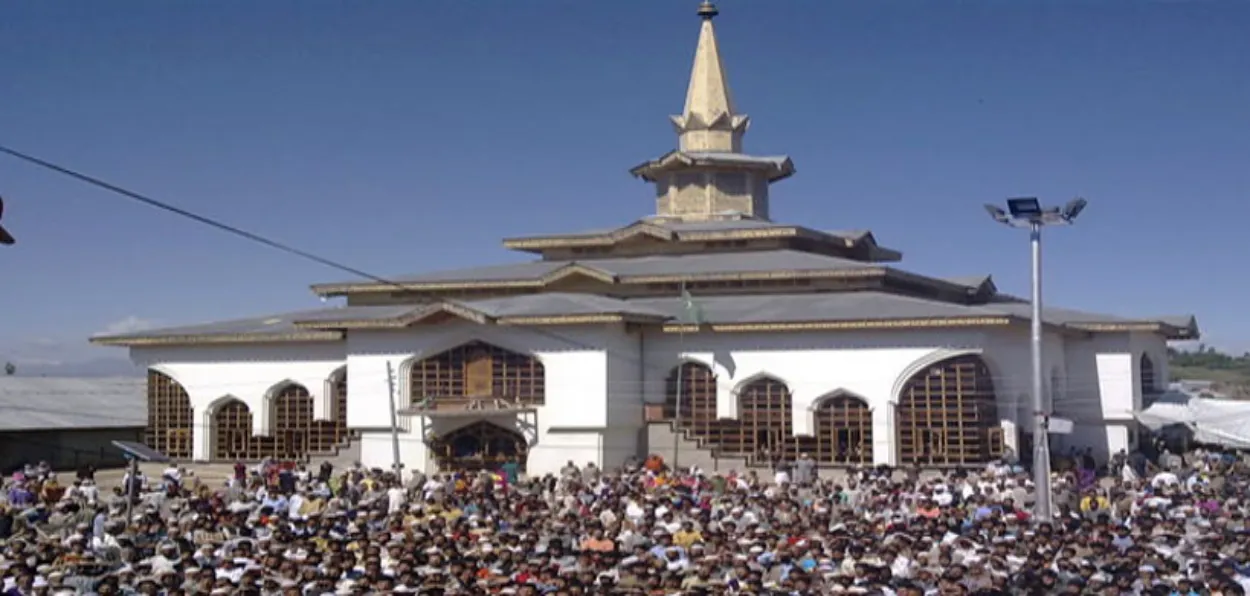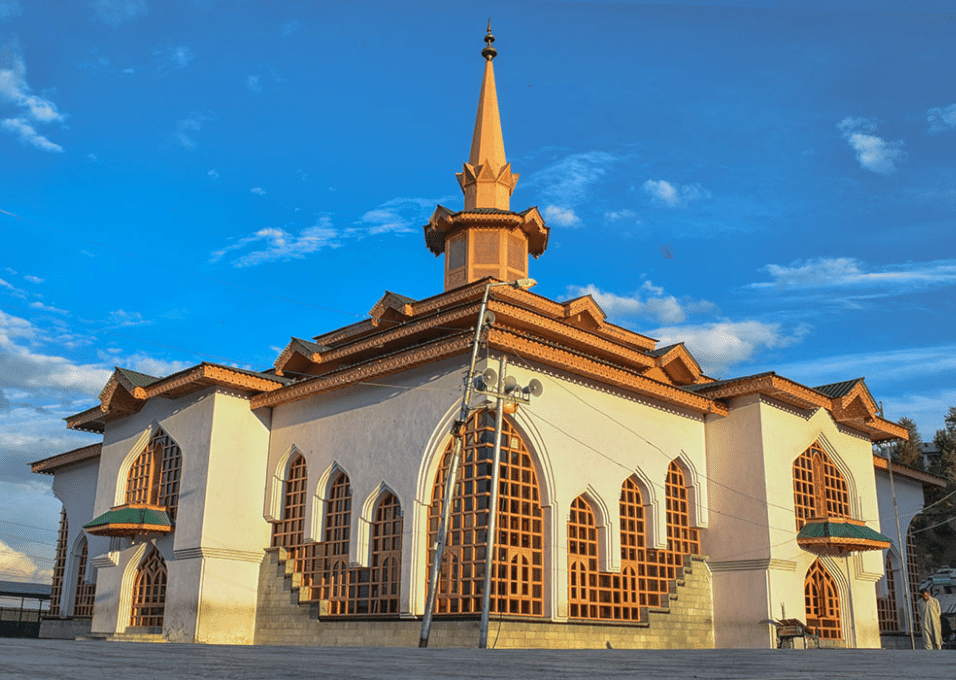
Aasha Khosa/New Delhi
Srinagar; May 11, 1995. In the wee hours, my phone rang. The person at the other end told me that the shrine at Charar-e-sharif was gutted. Though I, a news reporter based in Srinagar, was expecting this news, yet my heart sank. It was not just another religious place but the resting place of Kashmir’s patron Saint Sheikh Noorudin Noorani alias Nund Rishi revered by all Kashmiris irrespective of their religion.
The Valley was enveloped in grief and the authorities announced a strict curfew order. People were too numb to be loud about their grief. The silence of the graveyard hung over Kashmir.
The inevitable had come at the end of a nearly two-month standoff between terrorists led by Pakistan’s Mast Gul who had taken control of the shrine and the BSF troops positioned atop the surrounding hills to keep an eye on him and his gang of some 20 terrorists. Mast Gul gave interviews to media persons from inside the wooden shrine located in the center of the thickly populated town. The visiting journalists also saw machine guns installed by Mast Gul’s men pointed at the peaks.
The townsfolk stopped visiting the shrine. They saw Mast Gul and his men fill the small cooking gas cylinders with explosives and plant these around the shine. The resting place of Kashmir’s most loved Nund Rishi, founder of the Rishi order of Sufism, was booby-trapped and turned into a war zone.
The townsfolk started leaving their homes as the revered shrine was sitting on a powder keg!
The Pushto-speaking Mast Gul turned out to be a Major in Pakistan Army. No wonder, he meticulously planned his escape from the town after setting the shrine on fire. At least, 15 terrorists and two civilians were burnt alive. The Indian Forces' stuck to their strategy of not opening the first fire as it would set the shrine afire and cause huge civilian casualties. They just wanted to tire out Mast Gul and keep him pinned down to one place. Almost half of the houses in the town were also gutted.
The news had spread like wildfire. In an hour or so my cousin called from Pune. She was sobbing and spoke with a deep sense of grief. I was sad too but not to such a level.
She told me like everyone in her (Hindu) family, my maternal side, she had immense faith in Nund Rishi. She told me a story to explain it. When she was expecting her second child and wanted a girl, she suffered from paranoia. She visualize her baby girl as a blonde and her fear was linked to the blonde genes of her husband’s family.
She visited her “Bab’ (Father, in Kashmir), sat for hours in front of Nund Rishi’s grave; wept, and sought his blessings. On return, she was calm and composed, and when in due course, her baby girl was born she had a thick mop of jet-black hair.
The same day, my mother called me from Jammu. She too was distraught with a sense of big loss.
Now I was puzzled. I do understand reverence towards holy men but this was something else. I asked my mother why she and her niece were outrageously sad. Mummy told me about the importance of the Char-e-Sharif shrine for her Hindu family.
 The original shrine at Chrar-e-Sharif
The original shrine at Chrar-e-Sharif
My Mother’s agrarian family lived in village Nagam, the last big village before Chara-e-Sharif. Every season fresh crops – grain, fruits, maize, walnuts, and almonds - were brought in sacks and stored on the ground floor (Vout) of her house. My mom and her siblings would be too eager to eat the freshly harvested fruits but their mother forbade them. She reminded the children that the first offering was meant for the shrine of Nund Rishi.
On a designated day, the family rode a tonga (horse cart) to Charar. They offered their crop to the shrine and prayed there. My Mother said as children they returned with an assurance that everything would be fine.
No wonder Mast Gul and Pakistan’s Kashmir managers had chosen this shrine to seek attention of the Indian counter-insurgency forces and the eventual destruction. The shrine's huge symbolism and emotional value for the people of Kashmir was not lost on them.
Strategically, Pakistan tried to kill two birds with one stone; it believed Kashmir would be up in flames against the burning of the shrine or the people would forget about it and assume a larger ‘Arabised” Islamic identity.
Years later, Chaman Gul, an Afghan terrorist told Wikileaks that Mast Gul was a serving Major in the Pakistan Army. This revealition explained Mast Gul's ruthlessness and meticulous planning and also his final escape to Pakistan.
It may be recalled that besides waging a proxy war in Kashmir, Pakistan also wanted to radicalize the youth, something the country had successfully done to Afghan refugees’ children by converting them into Taliban.
In the initial years, the pro-Pakistan Hizbul Mujahideen had banned Kashmiris from going to the dargah that celebratings the unique Sufi-Rishi culture of Kashmir.
In his book, They Snatched My Playground, Khalid Jahangir writes that as a young person, he felt outraged when the annual five-day urs of Sufi saint Syed Qamar-ud-Din Bukhari was suspended in his hometown of Ganderbal.
Recently he expressed his happiness at the turn of events after the locals organized the festival after a gap of 33 years.
As per an official report, due to the pressure and influence of radical Islamic groups supported by Pakistan, and at times with money from other countries, today there were about 1,000 of 7,500 mosques, seminaries, and charity-based outfits in Kashmir under the control of the organizations representing these groups.
As against this, there are only 200 mosques – most in dilapidated conditions – controlled by Rishis and Sufis.
Khalid Jahangir told Awaz-the Voice that after the situation has improved people have started thronging the shrines of Sufis. “The love for Sufis is part of our DNA; we may keep it inside us for the fears of retaliation but no force can kill it.”
ALSO READ: Kashmir must showcase its Sufi, mystic traditions to the world: Dr. Naseem
The Charar-e-sharif shrine has been rebuilt; locals have rebuilt their house with some help from the authorities. The new shrine building is thronged by Kashmiris on festivals and thursdays. Mast Gul and Pakistan could never kill the spirit of revenrence Kashmiris have for their patron saint.
